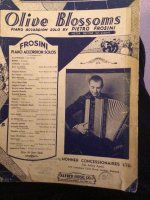There are a few tricky areas and I am slowly working my way through them. I thought it would be nice to have a thread where we can discuss tips and ideas on how to approach this tune.
For the meno mosso section, I am having a hard time making the melody stand out from the chord tones in the right hand. I am also having a difficult time with some of the larger bass jumps. And, finally, I am having trouble with the transitions from one section to the next.
Does anyone have any tips or ways to practice these problem spots.
For the meno mosso section, I am having a hard time making the melody stand out from the chord tones in the right hand. I am also having a difficult time with some of the larger bass jumps. And, finally, I am having trouble with the transitions from one section to the next.
Does anyone have any tips or ways to practice these problem spots.

